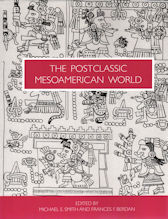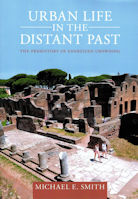At Home with the Aztecs provides a fresh view of Aztec society,
focusing on households and communities instead of kings, pyramids, and human sacrifice.
This new approach offers an opportunity to humanize the Aztecs,
moving past the popular stereotype of sacrificial maniacs to demonstrate that
these were successful and prosperous communities.
Michael Smith also engagingly describes the scientific, logistic and personal dimensions
of archaeological fieldwork, drawing on decades of excavating experience
and considering how his research was affected by his interaction with contemporary Mexican communities.
Through first-hand accounts of the ways archaeologists interpret sites and artifacts,
the book illuminates how the archaeological process can provide information about ancient families.
Facilitating a richer understanding of the Aztec world, Smith’s research also redefines
success, prosperity and resilience in ancient societies,
making this book suitable not only for those interested in the Aztecs
but in the examination of complex societies in general.







